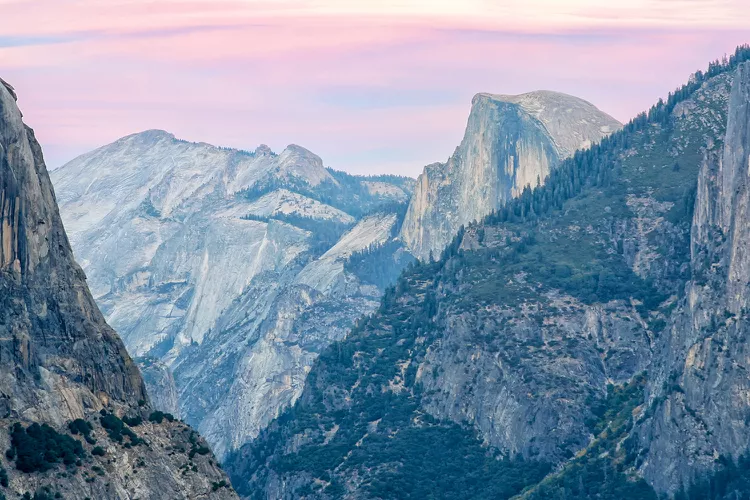1. Overview of Half Dome
Yosemite’s Half Dome stands as a stunning emblem of Yosemite National Park. This remarkable granite formation, known for its vertical face, is celebrated as North America’s sheerest cliff, with an impressive angle of only seven degrees from vertical. Although Half Dome is estimated to be 87 million years old, it continues to draw immense interest.
2. Viewing Half Dome
For those who may not engage in hiking, there are still ample opportunities to appreciate Half Dome from various vantage points across the park. Here are the top locations for capturing the allure of Half Dome:
- Cook’s Meadow: Located centrally in Yosemite Valley, this meadow offers picturesque views of Half Dome and allows for numerous photo opportunities.
- Mirror Lake: In spring, when water levels are high, Half Dome’s stunning reflection graces this tranquil lake, accessible via a short hike from shuttle stop #17.
- Tunnel View: This iconic vista point on Wawona Road provides a panoramic view that spectacularly includes Half Dome, El Capitan, and Bridalveil Falls.
- Sentinel Bridge: Situated over the Merced River near Yosemite Village, this bridge frames Half Dome beautifully amidst the trees, particularly stunning during the late afternoon light.
- Glacier Point: At Glacier Point, you can enjoy a view of Half Dome from above, which allows for a unique perspective on its striking outline.
- Olmstead Point: This viewpoint along Tioga Road (CA Hwy 120) showcases the backside of Half Dome. With binoculars or a telephoto lens, keen observers can spot hikers making their ascent.
3. Climbing Half Dome
The hike to Half Dome is challenging, as climbers ascend the rounded backside rather than the vertical cliff face itself. The round-trip hike spans 17 miles and generally takes 10 to 12 hours to complete. It features a notable elevation gain of 4,800 feet, requiring significant physical fitness, especially for the final 400 feet where hikers must navigate a staircase equipped with cable supports.
Despite its allure, the trail has seen issues with overcrowding, particularly during summer weekends. Consequently, in 2010, the park began issuing permits to manage the flow of hikers. Currently, only 300 day-hikers and 100 backpackers are allowed access each day. As such, planning is essential, and permits are mandatory every day of the week.
For a successful hike, proper footwear is crucial, as even a minor misstep can lead to serious consequences on the slick granite surface.
The trail to Half Dome typically starts from the Happy Isles shuttle stop, approximately half a mile from the trailhead. Alternatively, visitors can park at Half Dome Village, which is about three-fourths of a mile away.
For those considering camping before or after the hike, Upper Pines, Lower Pines, and North Pines campgrounds are conveniently located nearby. Keep in mind that these spots are highly sought-after, and advance planning is strongly advised.
It is important to note that the park service removes the cables and closes the Half Dome Trail during the off-season, typically by mid-October. The cables are reinstated—weather permitting—around the last weekend of May.
For additional resources and pertinent information regarding your trip, please refer to the Yosemite website.





